For the second year in a row, travel is the least intimate industry in our Brand Intimacy Study. In addition to having the lowest average Brand Intimacy Quotient, the industry has below-average scores for five out of the six archetypes (patterns that identify the character and nature of brand relationships) and below-average percentages of consumers in each of the three stages of Brand Intimacy, which measure the depth and degree of intimate bonds.
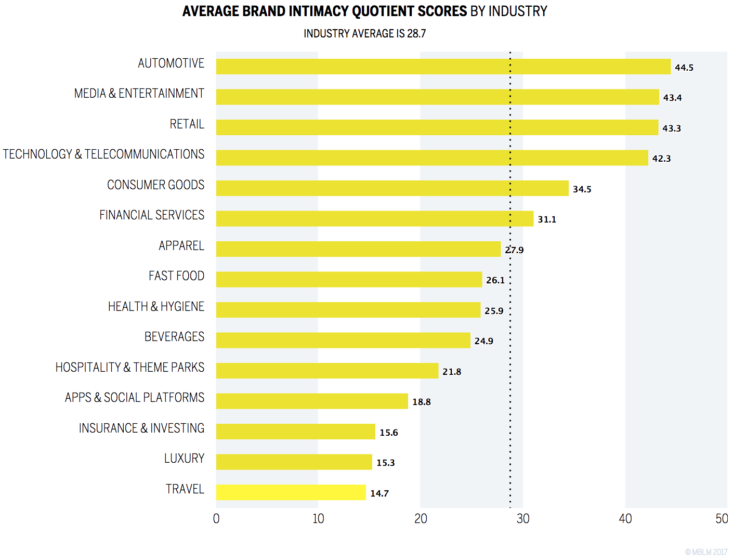
For some people, this makes perfect sense. While airlines offer a valuable service, they are often associated with the worst aspects of the travel experience: expensive tickets, uncomfortable seats, unsavory food, long waits, cancellations, lost luggage, and hidden fees. Somehow, an industry that allows us to travel the world safely and with relative ease has become defined by a collection of inconveniences and frustrations. An airline can transport a consumer to an exotic location and still be remembered only as the unsettling bookends to a dream vacation. Overall, the airline brands have been driven out of the good graces of the consumer, creating the opposite of brand intimacy—brand indifference.
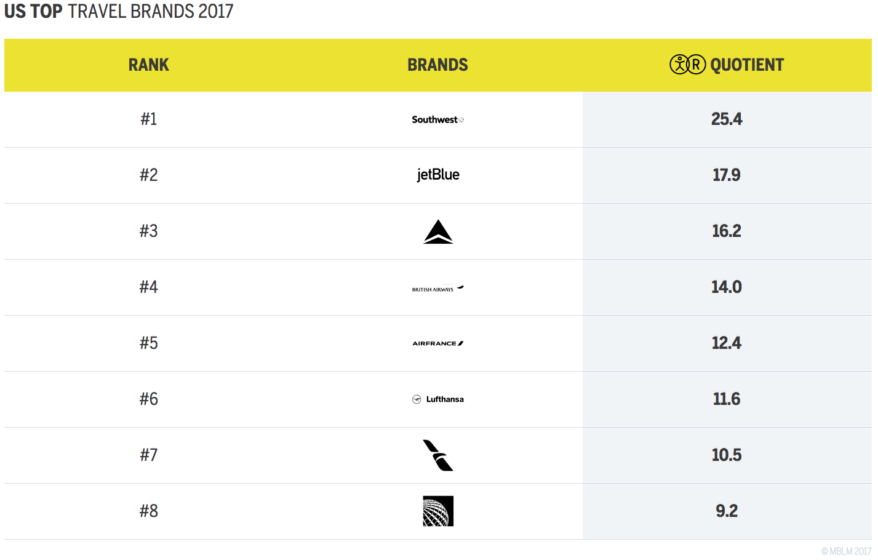
Given the multiple service touch-points across the customer journey, many of which are outside the airlines’ control, it is difficult to deliver a seamless travel experience, and travelers are feeling a loss of control. Too many choices for where to purchase tickets, uncertainty about fare rules and what a customer is actually getting, time-consuming processing, security procedures at the airport, passengers being bumped off their flights, potential delays, the prospect of missing a connection, and baggage not arriving at the correct destination make travel a stress-ridden experience with many potential potholes along the way. These challenges have made it difficult for airlines to establish closer emotional bonds with customers and achieve greater Brand Intimacy.
Making things worse, airlines are in a perfect storm of industry forces that further complicate the situation. The pressures of commoditization and consolidation work to limit competition and differentiation in the category, and the capital-intensive nature of the business makes it difficult for new entrants to disrupt and evolve the industry.
From purchase to check-in, to keeping travelers informed during processing, to in-flight connectivity and entertainment, to tracking luggage, technology has contributed significantly to providing choice and improving the passenger experience. But despite all the work the airlines have done to improve, consumers are unimpressed with the impact. Brand Intimacy scores are low (though profits are high), and horror stories like United’s “dragging incident” have made it easy to demonize airlines.
Maintaining positive consumer sentiments has been especially challenging for legacy airlines like United and American. In an industry where price is the dominant driver of purchase decision, airlines have to charge extra for additional services. When a low-cost airline that consumers view as being “on their side” offers these options, the consumer feels as though they’re being offered a choice, but when a legacy airline does it, they feel like they’re being gouged. And what’s even more challenging for the legacy brands is that these perceptions persist even as the price differentials in the industry grow smaller and smaller, meaning that certain airlines can charge the same prices and still be thought of as “low-cost.”
At this point, every airline brand is wondering (or should be wondering) how to get consumers back on its side. With so much working against the airlines, they need to differentiate their brands, but how? Based on research from our 2017 Brand Intimacy Study, which uses the responses of 6,000 consumers to examine and rank 386 brands across 15 industries, we wanted to look for clues in the airline industry and determine which brands are doing well. Here is what we found:
The results from our study suggest that airlines such as Southwest and JetBlue, who are perceived as being on the side of the customers, fare better in terms of Brand Intimacy. As a result, consumers are more willing to pay a 10-percent price premium for Southwest and JetBlue than they are for any other travel brands, with an impressive 44.5 percent willing to pay this premium for Southwest.
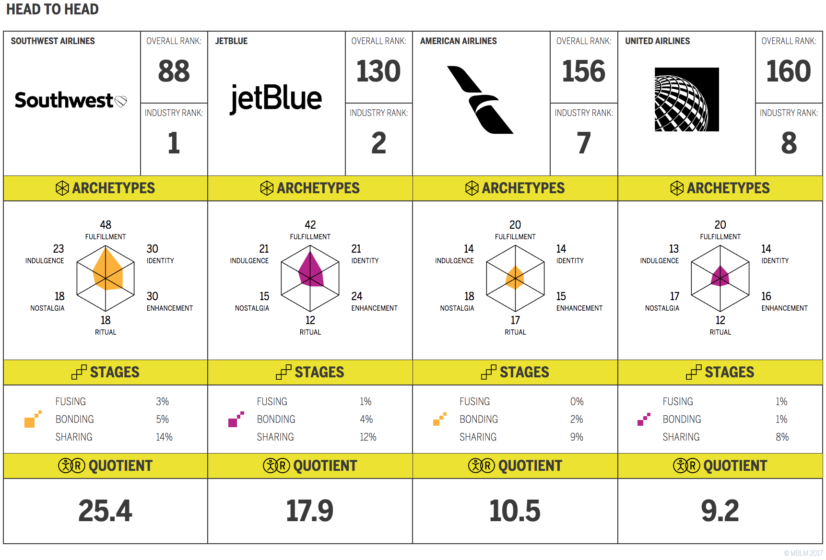
It may be surprising to some that a challenger brand is the airline that stands out, but Southwest is the clear leader of the industry with a Brand Intimacy Quotient of 25.4 (well above the industry average of 14.7), and it has done a better job at delivering intimacy through an authentic brand that gives consumers the feeling that the airline is on their side. At every level of its brand, Southwest outpaces the competition, distinguishing itself as more transparent, human, and emotive.
We used our Brand Intimacy framework to illuminate some examples of how Southwest (and in some cases, JetBlue) creates intimacy in its Essence, Story, and Experience.
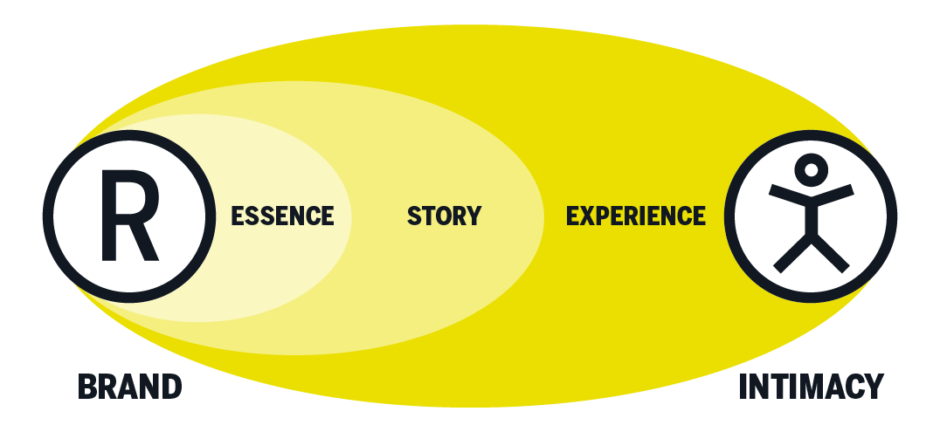
Essence
Since its inception in 1971, Southwest has stood on the side of the customer and strived to keep prices down by focusing on operational efficiencies and ensuring a customer-driven service culture. This strategy has paid off handsomely. The “airline with a heart” has been consistently profitable and has grown organically to become the largest airline operator in the United States. The Southwest visual identity supports this promise and makes a powerful statement about the brand. The heart not only distinguishes Southwest in the category, which is mainly inhabited by vague symbols of flight, like chevrons and wings, it also ties directly to the core of the brand. Southwest’s distinct brand essence is echoed even in the most unexpected places, such as its NYSE ticker symbol: LUV.
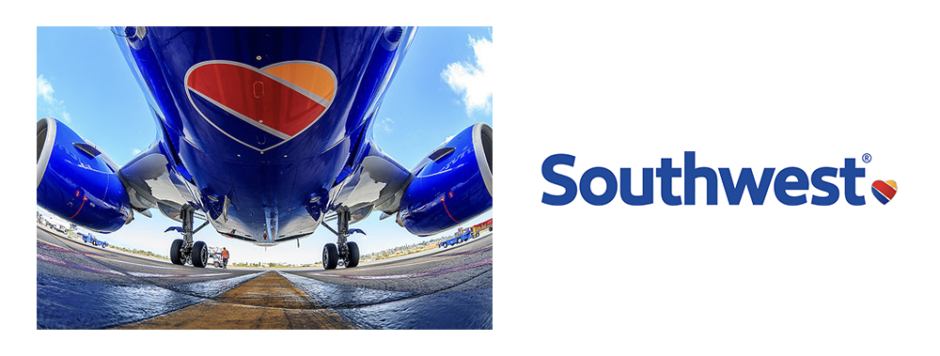
Story
Because consumers are quick to find faults within the airline industry, they love a challenger brand. Although Southwest has grown into a major player in the industry, their story is one of a small, local airline with a different approach to flying that travelers appreciate. Even though Southwest has changed, its narrative still connects it to something compelling and authentic and defines the brand as being unlike the rest of the industry. Southwest’s ads often emphasize the ways in which the brand challenges the industry or distinguishes itself, either by highlighting specific points of differentiation (e.g., no bag fees), or simply by using language that suggests it goes against the status quo.

JetBlue is another airline brand that has done well at telling its story, using a contemporary style across all its communications. The brand is dedicated to serving its customers “above all else.” JetBlue is fiercely committed to going above and beyond for its customers, whether that’s by adding legroom, providing extra amenities, or simply by treating passengers with a higher standard of respect. The brand even has a Customer Bill of Rights, which states the airline’s commitment to providing the most pleasant experience possible and clearly lists policies on compensation, cancellations, delays, and overbookings. JetBlue’s advertisements reiterate this commitment in the brand’s signature dry, witty voice, differentiating itself from the more corporate-sounding competitors.

Experience
For Southwest, what makes its brand ring so true is that it manifests in the flying experience. As discussed, much of the customer journey is out of the airlines’ control, but Southwest is still able to distinguish itself with its warm, friendly staff and unique boarding process. By allowing passengers to choose their own seats, Southwest makes the boarding process faster, easier, and more efficient.
Experience is another area in which JetBlue has also set itself apart by adding perks to its flying experience. From in-flight entertainment to added legroom, the brand strives “to make every part of your experience as simple and as pleasant as possible.” Any airline can claim to put its customers above all else, but for that message to resonate, it needs to be proven through a superior experience. JetBlue also instills a sense of togetherness in its passengers and crew. Travelers have been encouraged to clean up their areas with the help of staff (including the pilots) before leaving the plane. This helps build mutual respect between the passengers and the crew and demonstrates that everyone is on the same team.
Conclusion
Although the travel industry faces a lot of challenges and has lately been mired in PR catastrophes, airlines continue to strive to improve their offerings to attract customers and drive performance. While these efforts are necessary, airlines need to do more to focus on endearing consumers to their brands and building strong, lasting bonds. Southwest has demonstrated how a brand can feel unique, authentic, and more customer-centric, making travelers feel more intimate with it. Although JetBlue is not quite as successful as Southwest in terms of cultivating intimacy among travelers, the brand has demonstrated that it is capable of distinguishing itself in the industry in ways that are compelling for consumers. As price differentials in the industry begin to disappear and brands struggle to differentiate themselves, airlines should be building more intimate brands to better navigate the competition. Intimate brands outperform the S&P 500 and Fortune 500, command price premiums, and make lasting emotional bonds with consumers, and the airline brands that focus on creating and maintaining Brand Intimacy will be on a course for clear skies.
Get an overview of Brand Intimacy here.
Read our detailed methodology here. Our Amazon best-selling book is available at all your favorite booksellers. To learn more about our Agency, Lab, and Platform, visit mblm.com.
